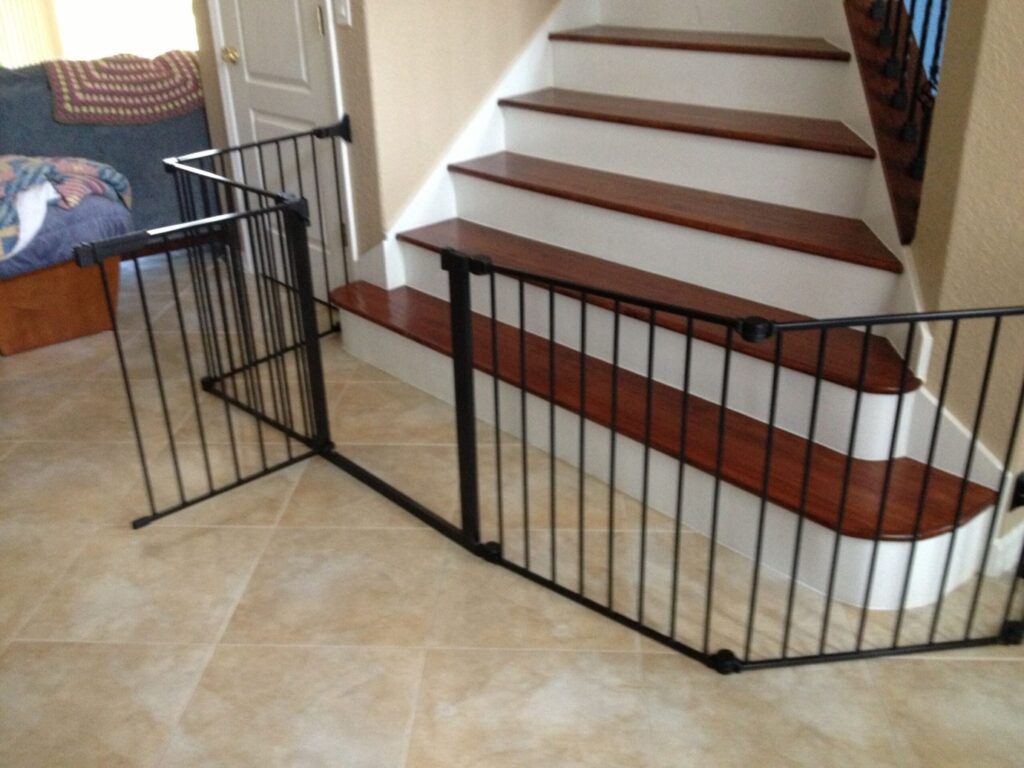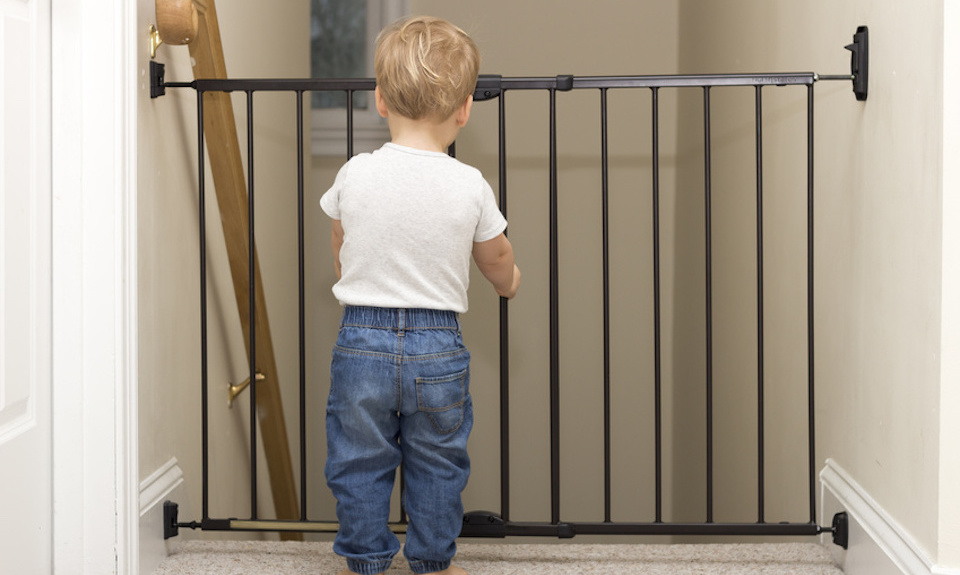If you’ve ever had to watch over a toddler or toddlers, you will agree that it can be a highly stressful task. These toddlers, excited with their newfound ability to crawl or walk, but without the inhibition necessary for self-preservation, are all over the place without an iota of fear.
Toddlers have been found in the most frightful of situations. Parents have lost children to this explorative push which explains why the CDC lists accidents (unintended injuries) as the top leading cause of death in children aged 1 to 4 years. You can read the report here.
As a way of preventing this, parents have had to become creative, implementing various security practices to keep these ones safe. One of the strategies that parents and guardians now employ is the use of baby gates. Is this a strategy that you can also use?
In this article, we will be looking at this child-proofing strategy with a view to showing why and when this may be the best strategy for you.
What Is a Baby Gate?
Let’s start from the beginning by explaining what we mean by baby gates. These are barriers strategically positioned to either keep a child within a specific perimeter or prevent them from getting into a dangerous area.
Below are some examples:
- Barriers placed at the top of a staircase to prevent a child from falling down the staircase.
- A barrier placed at the entrance to the swimming pool to prevent the child from gaining access to the pool.
- Barriers that prevent access to hot appliances or open fires – cooker, heater, fireplace etc.
These are just a few examples.
Why Are Baby Gates Important?
Though the answer to this should be pretty obvious, we will still go ahead to list a few reasons why these gates are important.
- They offer a preventing solution that ensures that children are protected from possible harmful situations.
- They offer parents and guardians a level of peace of mind. The assurance that the child is secure within a safe space can give the parent the confidence to go about their chores without constantly running around to look for the child.
Who Needs a Baby Gate?

As important as these devices are, not everyone may need them. There are specific situations that will require the use of these devices. These will apply mainly to homes with the following:
- Stairways – The stairway is a really dangerous place for a child. They are attracted to it and will always want to explore its allure. To prevent them from tumbling down the stairs, install a strong barrier at the top of the stairway and a baby gate at the bottom. This will ensure that the child does not have any access to the stair from the top or bottom.
- Open Fires – Fireplaces can add a lot of warmth and ambience to your home, but it can also pose a major threat if you have a child. The use of a simple barrier that cordons off a safe space around the fireplace is important. This also includes access to the kitchen and all the hot, sharp items in it.
- Pools and Ponds – Children love splashing in water so any access way to these areas should have suitable barriers to prevent unsupervised access.
- Open Floor Plans – Many modern homes have an open floor plan. While this is lovely for adults, it creates an endless space of toddlers to explore, cause damage and possibly hurt themselves. In such an open floor plan, barriers can be used to map out a safe enclosure for the child to play in.
- Workshop or Tool Area – Wherever there are heavy, sharp, and possibly harmful tools, children should not have unfettered access to such a space. It will be crucial to place a gate at the entrance to such a space to prevent any possible accidents.
If you live in a home without any of the above or your home already has some level of proofing, then you may not need a baby gate. There may be some areas where you may just need a retractable baby gate that can be deployed only when it is necessary. The important thing is that you ensure that any space your child has easy access to is completely safe for them.
Types of Baby Gates
Choosing the baby gate that is ideal for your specific case requires that you know the different types of baby gates available and what each offer.
Let’s quickly list a few of these different types:
- Pressure-Mounted Gates – These are gates that are simply squeezed into place by depressing the pressure-responsive ends. These do not require any hardware to mount and can be easily removed. These types of gates are ideal for situations where the child cannot exert a lot of pressure and possible dislodge it. This should NEVER be used at the top of the stairs.
- Hardware Mounted Gates – Different from the pressure-mounted type, these offer more permanence because they are often screwed to the wall, ensuring that they provide greater resistance. This is the ideal type to use at the top of the stairs.
- Retractable Baby Gate – As the name implies, these usually have one end mounted and a hook at the other end. When required, the gate can be pulled out from the wall mounted end and secured on the hook at the other end. This is great for spaces where proofing is not always required.
These are just three major types. You can also learn about other types here: https://parentingyard.com/.
Conclusion
Babies are our precious bundles of joy, and they require all the help we can offer them to ensure that they continue to be just that. Providing them with a safe space to explore and grow is a task that we must take seriously. They cannot take care of themselves at this stage so we much do all we can both for their safety and our own peace of mind.
By using the right baby gates in our spaces, we can achieve the safety they deserve, giving ourselves the peace of mind and confidence to go about our other tasks, knowing that they are safe within their safe zones.
